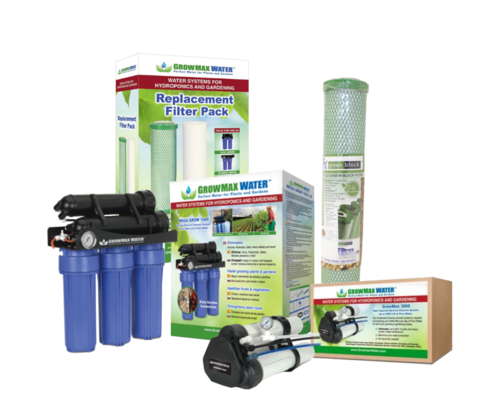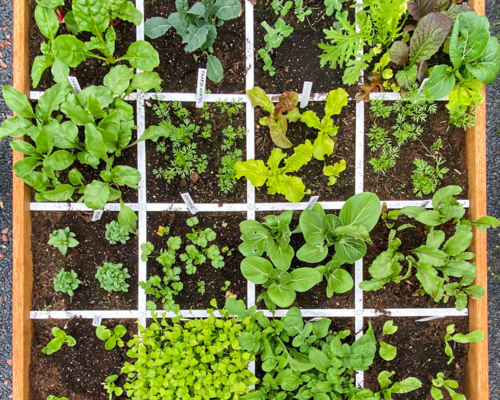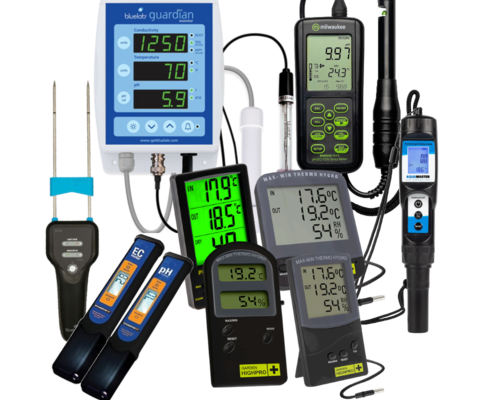Growing with Osmosis Water
Osmosis water is water that has been purified of all minerals and salts through a process called reverse osmosis. It is clean, pure and therefore can be used in many ways, including horticulture. In this blog, we will discuss what osmosis water is, why it can be useful in horticulture and how it can be used.
What is osmosis water?
Osmosis water is water that has been purified of all minerals and salts through reverse osmosis. This process uses a membrane that allows only water molecules to pass through and keeps out all minerals and salts. The result is water that is virtually 100% pure and free of contaminants.
Values of osmosis water
Osmosis water generally has very low concentrations of minerals and salts, making it almost completely pure water. However, the exact content of minerals and salts can vary depending on the quality of the water used in the osmosis process and the efficiency of the osmosis membrane.
In general, osmosis water has an electrical conductivity (EC) of less than 10 microsiemens per centimeter (µS/cm), indicating that it contains virtually no dissolved salts and minerals. The pH of osmosis water can vary between 5.0 and 7.5, depending on the pH of the water used in the osmosis process and any adjustments made to stabilize the pH.
It is important to note that osmosis water is not always sterile. The osmosis process can remove some bacteria, viruses and other impurities from the water, but it cannot eliminate all contaminants. Therefore, osmosis water is sometimes further treated with UV light or other methods to remove any remaining contaminants.
Is there a difference between demi water and osmosis water?
Demineralized water, or demi water, and osmosis water are two different types of water. Although both types of water are treated to remove contaminants and minerals, different techniques are used to accomplish this.
Demi water is produced by distilling water, which removes all minerals and contaminants from the water. This is done by heating the water to its boiling point, causing it to evaporate. The water vapor is then collected and condensed into pure water without minerals or contaminants.
Osmosis water, on the other hand, is produced by forcing water through a membrane under high pressure. This membrane allows only water molecules to pass through, while minerals, salts and other contaminants are blocked. The result is water that is almost completely free of minerals and contaminants.
While both types of water are suitable for use in horticulture, each has its own advantages and disadvantages. Demi water can be more readily available and is often cheaper than osmosis water. On the other hand, osmosis water is generally purer and more reliable when it comes to water quality.
It is important to note that both types of water are not always sterile and may not be suitable for certain applications that require completely sterile water. Therefore, it is important to check the water quality carefully and consider further treatments if necessary to adapt the water to the specific needs of your crop.
Why is osmosis water used in horticulture?
There are several reasons why osmosis water can be useful in horticulture. First, the water is free of minerals and salts, meaning it has no adverse effects on the crop. This is especially important in areas with hard water, where the amount of minerals and salts in the water can be too high. By using osmosis water, the grower can ensure that the crop receives only the nutrients it needs and is not burdened with additional minerals or salts.
Second, osmosis water can help reduce diseases and pests during your grow. This is because contaminants in the water can contain bacteria and fungi that can cause disease. By using osmosis water, the grower can reduce the risk of diseases and pests and create a healthier growing environment for the crop.
Third, osmosis water can help improve crop quality. Because osmosis water is free of minerals and salts, it can help plants better absorb nutrients. This can lead to better crop growth which can result in higher yields and crop quality.
How is osmosis water used in horticulture?
Osmosis water can be used in different ways in horticulture. We have named a few important applications below.
Irrigation
One of the most common applications of osmosis water in horticulture is irrigating the crop. By using osmosis water for irrigation, the grower can ensure that the crop receives only the nutrients it needs and is not burdened with additional minerals or salts. This can lead to better growth which can result in higher yields and crop quality.
Crop Protection
Osmosis water can also be used to protect your crop. Because osmosis water is free of contaminants, it can help reduce diseases and pests and create a healthier growing environment for plants. It can be used to water and wash the crop, or as part of a pest control program.
Nutrition
Osmosis water can also be used in feeding your crop. Because the water is free of minerals and salts, it can help your crop absorb nutrients better. For example, it can be used to dissolve fertilizers or as an ingredient in a nutrient solution.
Hydroponics
Osmosis water is more commonly used in hydroponics, hydroponics is a method of growing plants in water without soil. Because there is no soil substrate to hold minerals and salts, they can accumulate in the water and have a negative effect on the crop. By using osmosis water, the grower can ensure that the crop receives only the nutrients it needs and is not burdened with additional minerals or salts.
Germinating seeds
Osmosis water can also be used when germinating seeds. The water can help hydrate and germinate the seeds without burdening them with extra minerals or salts from the start.
Plant nutrition and osmosis water
There are several types of plant nutrition available specifically designed for use with osmosis water. These plant nutrients contain the proper ratios of essential nutrients needed for crop growth without adding additional minerals or salts that can be harmful to plants grown with osmosis water.
Many of these plant nutrients contain chelated minerals, meaning the minerals are bound to organic molecules to make them more available to the crops. This makes it easier for the plants to absorb and use the nutrients.
It is important to remember that using osmosis water in combination with plant nutrition can lead to faster uptake of nutrients by the crops. As a result, it may be necessary to add more nutrients than when using regular tap water.
Conclusion
Osmosis water systems are useful devices for growers, especially in areas with hard water or contaminants in the water. The water is virtually free of minerals and salts and can help reduce diseases and pests, improve crop quality and increase yields. It can be used in a variety of ways, including irrigation, crop protection, nutrition, hydroponics and seed germination.
Do you want more information?
Want more information on a specific topic? Check our "Knowledge Center" blog page to see if the information you need is among them. Is the information not in one of our blogs? We have a piece of text with each category where the products are explained in broad terms. The most popular categories are:



